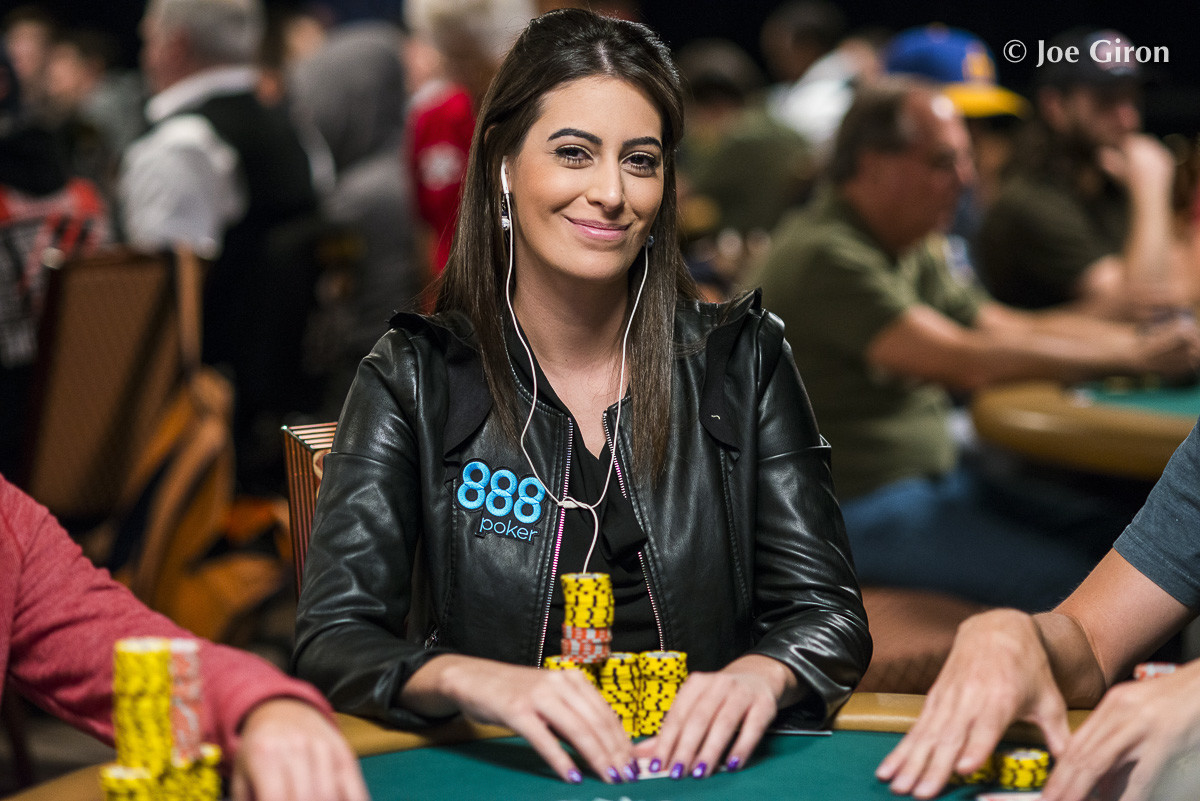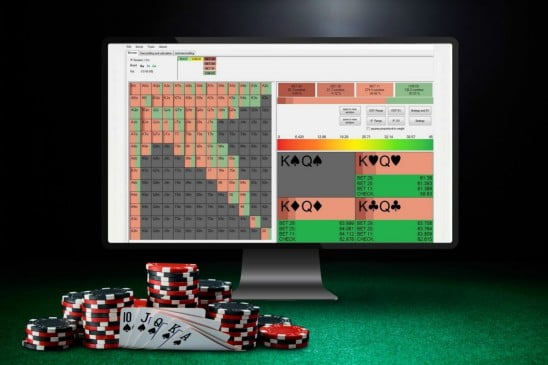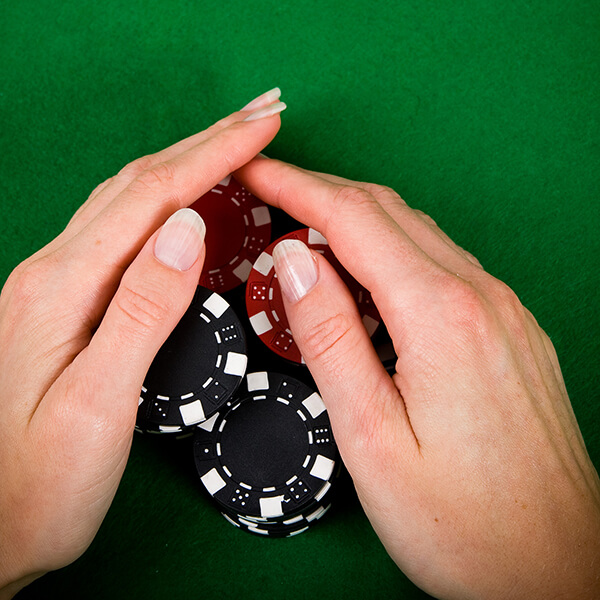Poker Stack Size Strategy Rating: 6,9/10 3867 reviews
There is a reason we use the auto-rebuy feature. Correct strategy changes significantly depending on the amount of starting chips we have for our hand. Most of us have invested our time learning correct strategies for 100bb poker. As such, we want to spend as much of our time possible playing 100bb poker where we have the biggest edge. It doesn't necessarily make sense to let our stack dwindle to 70bb where we have not developed our poker strategy to the same level. This is why we can often identify fish when they don't use the auto-rebuy function.
- Poker Stack Size Strategy Template
- Poker Tournament Stack Size Strategy
- Stack Chips Poker
- Poker Strategy Tips
- How To Play Deep Stack Poker
Poker Stack Size Strategy Template
Here are the basics of how to play poker with 10 or 20 big blinds though: The best short stack poker strategy is to play tight preflop, fold all speculative hands like suited connectors and suited aces, bet small postflop with both your bluffs and your value hands, play. There are too many casino games to count and always more, is the simple answer. A quick overview of the kinds of games you can typically expect from a casino includes slots, poker, blackjack, roulette, scratch cards, bingo, Poker Stack Size Strategy keno, craps and baccarat, to name but a few. Keep in mind that even these examples can.
Does this mean that we should therefore ignore basic poker strategy for all other stacks sizes? Definitely not. Unfortunately we are going to be forced to play against players who have varying stack sizes. Only the shorter stack in a heads-up situation determines the effective stacks. So if we have 100bb and we are playing against a player with 50bb, we are playing with 50bb effective stacks whether we like it or not. If our opponent has developed a strong 50bb strategy and we are out of our comfort zone then he is going to have an edge.
This article will cover some basic pointers regarding play vs mid-stacks which will help us to neutralise that edge. We will look at preflop situations and postflop situations.

Preflop
The first mistake players make is playing too tight vs preflop aggression. 50bb stack opens and we hold part of our standard
3-bet bluff-range. Many players might say the following,
Correct strategy changes significantly depending on the amount of starting chips we have for our hand. Most of us have invested our time learning correct strategies for 100bb poker.
“Normally I'd 3bet here but this guy doesn't have a full stack so I fold”. A similar thing might happen when facing a 3bet from a mid-stack. “Normally I'd play back with this holding but my opponent doesn't have a full stack so I fold”.But if we were to read articles or watch videos on learning to play a mid-stack strategy we'd see that the advice is to 3bet very aggressively. This is exactly the same for us when we are playing with 50bb effective even if we have a 200bb stack. We actually confer a huge advantage to mid-stacks and short-stacks if we only 3bet them with premiums and fold to most of their 3bets. This is one of the reasons why mid-stacking and short-stacking is still profitable. Many of the 100bb regs don't know how to properly adjust because they have spent their time training with 100bb stacks.
3bet/4bet Game
The first thing to understand is that we should be prepared to stack of lighter with 50bb stacks. This might increase our variance but if we don't do this we are going to find ourself undefended. We should always use stats where possible since not all mid-stack players are good aggressive mid-stacks, some are simply recreational players and might not 3bet that aggressively.
So in a situation where we'd normally stack of with QQ+/AK we might now be stacking off with TT/AQ. This is just our value range, it's important to have a bluffing range vs the hyper aggressive opponents.
One of the confusing things about playing vs mid-stacks is understanding whether we should 4bet to a regular size or simply 4bet-jam. This is actually very close and dependent on the sizings used so there is not set answer to this. However it's useful to consider some basic poker maths so that you can make your own decision. The general idea is that if we are priced in after we 4bet even with our bluffs then we may as well be jamming. By not jamming we give our opponent the opportunity to 5bet bluff with very high equity hands that he would otherwise be folding vs our 4bet jam. It works out more profitable to 4bet jam in this instance even if it's a bit of an overjam.
Ideally when we open-raise knowing that there is a mid-stack IP on us, we should be using a 2bb sizing rather than our default sizing. (Just continue as normal if 2bb is your default sizing). If our opponent raises to 7bb and we 4bet to 15bb, we'd need to call an extra 35bb into a total pot of roughly 100bb. This means we'd need 35% equity to make the call. If we had bluffed with a high equity hand like A5s we would have 31.23% equity vs a value range of TT+/AQo. Folding is clearly still a valid option with our bluffs.
However, what happens if we make a few tweaks to the situation? Opponent makes a large 3bet to 10bb. We 4bet to 22bb. We'd now need to call an extra 28bb to win the total 100bb pot. We need 28% equity to make the call and are priced in with all of our bluffs. It likely makes sense to directly 4bet jam over our opponents 3bet with our value and bluff-range. We are guaranteed to fully realise our
equity in this scenario and often prevent our opponent from realising his.
One of the confusing things about playing vs mid-stacks is understanding whether we should 4bet to a regular size or simply 4bet-jam. This is actually very close and dependent on the sizings used so there is not set answer to this.
Something similar might occur if the effective stacks are 40bb. This is not technically mid-stack-strategy, however it's a very common stack size on some networks. 20bb used to be the official amount of chips used for short-stack-strategy, but after some networks set the min-buyin at 40bb then 40bb became the new shortstack strategy. While 40bb and 50bb play are extremely similar we can see that we are very close to the threshold where we decide whether to use a non-allin 4bet sizing.
There is no trick for this, we must make a decision on each individual hand. However it's useful to note that when facing a 5bet with 50bb effective stacks, the amount of big-blinds is exactly the equity needed to call. So if we need to call a 30bb allin 5bet from our opponent, we need 30% pot-equity to make the call.
3Betting Equity
We mentioned earlier that we should still be 3betting aggressively vs mid-stacks. Does this mean that we'd use exactly the same hand-range as we would against a 100bb opponent. Not at all, we should definitely make some adjustments.

Since we are always closer to an all-in when playing 50bb effective, our pot-equity starts to become more important than if we were playing 100bb stacks. Low equity hands like 67s are still very playable with 100bb stacks since we can put pressure on our opponent postflop. We can still put pressure on our opponent with 50bb stacks but not as much. Very often a 50bb hand will end on the turn in a 3bet pot.
Equity is therefore more important than playability with 50bb effective stacks. Depending on the sizings used as discussed earlier we will either be
- 5bet jamming (where the only thing that matters is pot-equity)
- Facing a 4bet all-in from our opponent (where the only thing that matters is pot-equity)
So high equity holdings like Axs or Pocket-Pairs go up in value, while low equity speculative hands should be folded more frequently preflop vs a 50bb opponent. Axs and PP's make excellent 4bet and 5bet bluff jams.
Postflop Strategy
The easiest way to begin understanding postflop strategy with 50bb stacks is to think about how the bet-sizings differ from 100bb poker.
Firstly we don't want to be bloating the pot too much preflop. The more chips we can leave behind for postflop play, the more our results will be a function of our skill rather than a function of variance. So we should
- open-raise to 2bb when there are mid-stacks still to act
- 3bet to 7bb when facing a 2bb open
So let's assume a BB vs SB situation we will have 43bb left in our stacks and there will be 14bb in the middle. There are generally 2 sizing plans we can use, the 2 street and the 3 street sizing plan.
2 street plan – So if we bet around 10bb on the flop we will set up roughly a pot-sized bet. There will now be 34bb in the middle and we will have 33bb left in our stack. We can now shove the turn depending on the turn card.
The main determining factor in whether we take this line or not will often be the board texture. If the board texture is drawy and we hold something like an overpair we want to get the money in fast. We'd prefer to be all-in by the turn rather than giving our opponent a free river card.

We don't want to do this purely with value-hands however unless our opponent is a calling station. We should mix in some high equity bluffs. A good starting point is to take our decent back-door flushdraws, fire the flop, and shove the turn if we pick up our draw.
While balanced play is outside the scope of this article we should obviously be checking back some of our very strong hands on the flop. Also while it's likely +EV to 2-barrel a flopped flush-draw, balanced play involves checking these hands back with some frequency.
3 street plan – Many players are not actually aware that it is possible to 3-barrel in a 3bet pot with 50bb stacks. It's completely possible and should be a useful trick in our arsenal. We simply need to be very careful with bet-sizing in order to employ this strategy.
So using our previous sizings -
43bb stacks
If we bet around 1/3rd pot on the flop 5bb. The situation will be as follows -
37bb stacks
If we then bet just 1/3rd pot on the turn, i.e 8bb.
29bb stacks
Balanced strategy would involve using this line both for value and as a bluff. The exact ratio of bluffs to value will depend on our opponent as usual.
We have now set up a pretty decent shove for the river. As before the board texture will usually dictate which of the two lines we will take. This line is useful for very dry texture where we are not concerned about giving free cards to our opponents
Balanced strategy would involve using this line both for value and as a bluff. The exact ratio of bluffs to value will depend on our opponent as usual. There is little point 3barrel bluffing against a calling station, we can simply weight our 3barreling range purely towards value.
Single Raised Pots
Let's briefly explore what is possible in terms of sizing for single raised pots.
Let's assume we make a 2bb open in the CO and SB calls. BB folds. There will be 5bb in the middle and 48bb effective stacks. Let's use a standard 2/3rds pot size bet on flop and turn and see what this achieves by the river.
We bet flop 3bb.
45bb stacks


27bb in the middle
So we see that we potentially might need to overbet here if we wanted to get stacks in. Let's see what happens if we make a slightly larger bet on the flop and turn
We bet flop 4bb
44bb stacks
34bb stacks
Poker Tournament Stack Size Strategy
So we see that we actually have to increase our sizing slightly on flop and turn to get the stacks in by the river. Assuming our opponent open raised to a large sizing and we were the cold-caller we could get the stacks in with a 3barrel without the need to increase our sizing.
So in summary,
- Be prepared to fight preflop
- Be prepared to stack off lighter
- Understand correct sizings postflop
Further Strategy:Tight Aggressive : Continuation Bet : Check Raising : Float Play : Stack Sizes : Relative Position
Stack Chips Poker
Believe it or not, the size of your stack at the cash game table in Texas Hold'em can have quite a significant effect on your strategy.
Sure, it's nice to build up a big stack rather than diminish down to a small one, but there are some more important points to consider depending on how big your stack is when you're sitting at the poker table.
General stack sizes advice.
As a quick tip before we get in to the meat of the article, I would like to point out that it is always best to buy-in for the maximum amount at the cash game table. This will usually be 100 times the big blind. It may seem like a good idea to buy in for a small amount to reduce the risk of losing a large amount of money, but if you are a winning player you are simply restricting yourself from raking in bigger pots.
Buying in for the maximum maximizes your earnings if you are a winning player. That's a fact.
If you feel really uncomfortable buying in for the maximum, then you should consider moving down a level or two. As a winning poker player, you should not be afraid to buy in for the maximum at the table to set yourself up for bigger wins. Have some confidence in your ability and buy in the for the maximum amount where possible.
Poker stack size groups.
Not a big deal, but as a general rough guide to give you an idea of how stack sizes can be grouped...
A small stack can be referred to as being 'short stacked', and a having a big stack can be referred to as being 'deep stacked', but that's all much of a much ness.
Why stack sizes are important.
Stack size is important because it is an indicator of how big the pot could become in any given hand. Therefore if you and your opponents have big stacks...
- Players will be aware that a lot of money could be at stake.
- Players will not be prepared to go to war with marginal hands on the flop or turn.
- There will be a lot of post-flop play if the hand makes it that far.
- Players will be more likely to open up their starting hand requirements in the hope of catching a sneaky big hand on the flop.
On the other hand, if your or your opponent does not have a particularly big stack (and so has a small one)...
- Players will be aware that not much money is at stake.
- There is unlikely to be much post-flop action.
- Players will therefore usually stick to playing premium hands.
Now you may or may not have thought about these points before, but they really will have an effect on how you and your opponents will approach a hand. Therefore you are going to need to adapt your strategy accordingly.
Poker Strategy Tips
How the size of your stack affects yours strategy.
Lets break it up into big and small stack strategy (also thrown mid stack in for fun)...
Big stack strategy.
How To Play Deep Stack Poker
With a big stack, there is a lot of money at stake, and so you and your opponent should be looking to catch each other out with a big but hidden hand. Although it would usually sound pretty silly to call a 3 or 4 big blind raise with a hand like 6 7 or a low pocket pair, the fact that your opponent is not expecting you to call with hands like these means that could clean them out if you hit the right cards. So your implied odds in the big stack situations can make what seem to be “crazy calls” worthwhile.
This means that against an experienced player, you should not always confine your opponent's starting hand range to premium cards if they call your raise when you both have big stacks. This is the case at tables with 6 players or less especially, so try not to be too pissed if you find your opponent decides to call with a hand like 7 8 when you make a 3 big blind raise with AK.
If you want to reduce the chances of your opponents calling with such a wide range of hands, consider raising around 5 big blinds each time to really take the odds out of their favour.
Mid stack strategy.
Pretty much play standard poker here, too much of a wide topic to give any concrete strategy. However, I will say that you do not have as much implied odds, so lay off on the suited connecting hands a little, and don't call too much with small pocket pairs.
This article is focusing on big and small stack strategy mainly anyway, so sorry about the lack of detail here for you mid-stackers.
Small stack strategy.
If you or your opponent has a small stack, then you are not going to be playing for such a big pot when all the money goes in. In addition to this, the fact that the amount of money being played with is small in relation to the size of the blinds, it means that there is going to be very little room for post flop action.
Remember that if your opponent has a short stack, you are effectively playing short-stack poker also.
Therefore, there is no need to think about getting tricky with any hands for a small pot, just stick with the premium hands and fold any marginal or weak ones.
By sticking with the big cards, you are increasing your chances of winning in situations that are going to require little to no post flop play, which makes trying to outplay your opponent or get lucky with weak hands an ineffective strategy.
Stack size strategy overview.
In a nutshell...
- Small stack strategy is basic poker with big cards.
- Big stack strategy involves more thought and trying to catch your opponent out with a big hidden hand.
This doesn't mean that when you and your opponent's effective stacks are deep that you call with anything and everything under the sun. Just be aware that hands with sneaky potential can land you a decent profit from time to time.
Go back to the sublime Texas Hold'em guide.
Can You Afford Not To Use
Poker Tracker 4?
“I wouldn’t play another session of online poker without it”
“I play $25NL, and in under 1 week PT4 had paid for itself”
Comments




